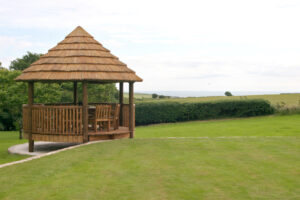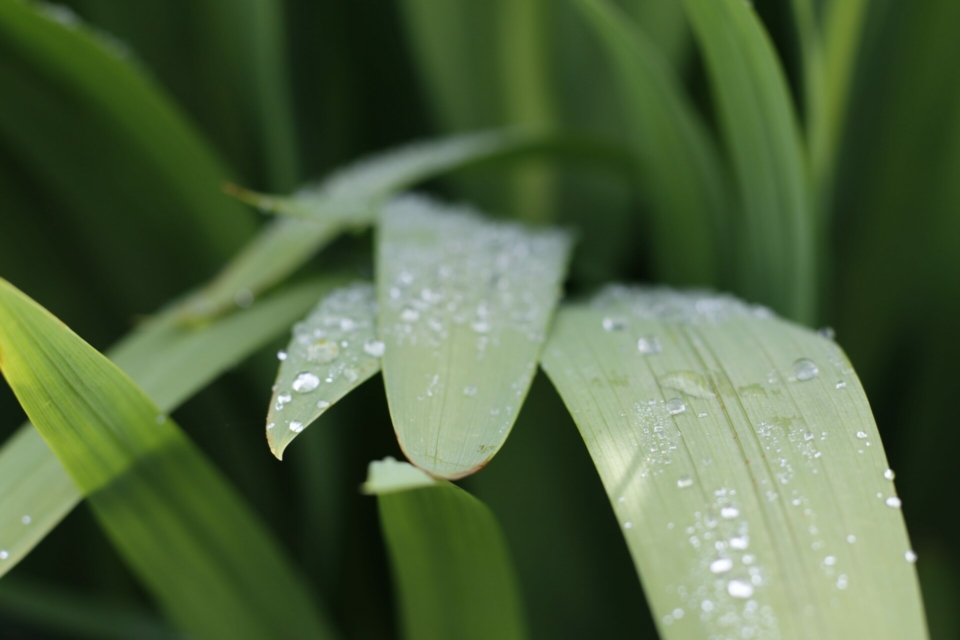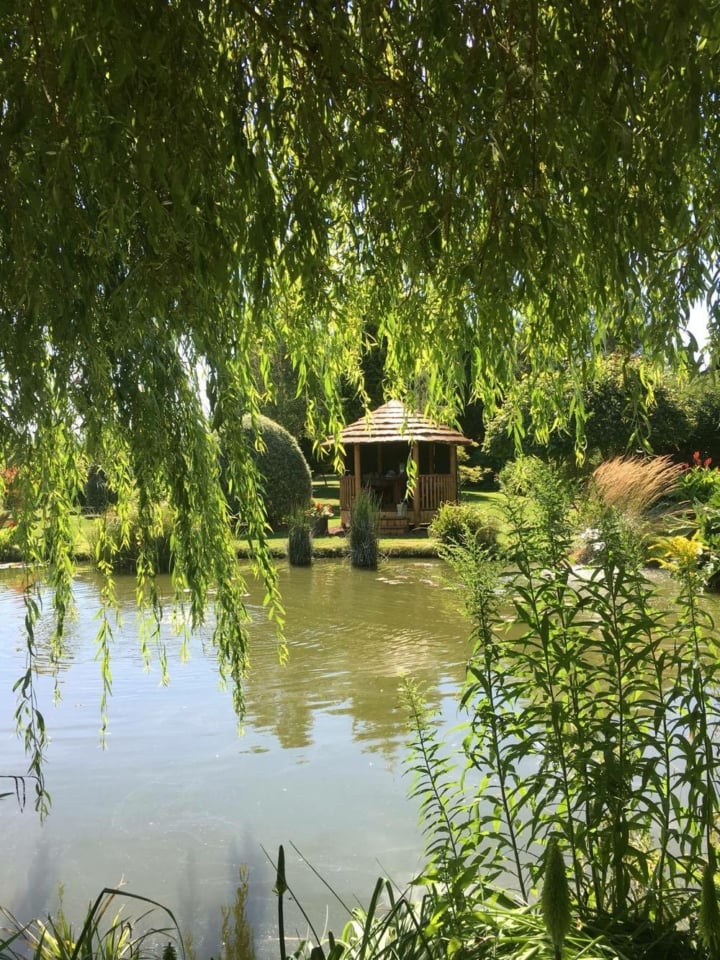Before you start building your dream gazebo, it’s important to think about the best wood options for constructing a gazebo. The type of wood you choose not only impacts how your gazebo looks but also influences its longevity, maintenance needs, ability to withstand weather conditions and the cost involved.
This guide will delve into the wood choices available for building your gazebo to help you make a well-informed decision.
There is an array of wood varieties to consider such as Douglas Fir, Teak, Cypress, and White Oak. However, Cedar, Redwood and Pressure Treated wood are among the popular choices for constructing garden gazebos. To kick off the search for the wood types, for your gazebo project lets first focus on durability.
Durability
The strength of wood depends on many factors, including the type of wood, how it’s treated or finished, environmental conditions and the presence of insects or fungi.
Wood Variety
Different types of wood have different levels of natural durability. Some varieties, like cedar, redwood and teak have oils, resins or chemicals that make them more resistant to decay, insects and rot. Hardwoods generally tend to be sturdier than softwoods overall.
Finish
Wood can be treated with chemicals to improve its durability. Pressure treated wood is treated with preservatives under pressure to shield it from decay, insects, and rot.
Moisture and Exposure to Weather
The durability of wood can be affected by exposure to moisture, sunlight, and changes in temperature. Excessive moisture can lead to rotting while prolonged exposure to UV rays can cause fading and deterioration of the wood surface. Proper design choices along with maintenance can help lessen these impacts.
Insect Attacks
Certain insects that bore into wood such as termites and beetles can cause structural damage. Opting for wood species that are naturally resistant to insects or treating the wood with insecticides can help prevent infestations.
Wood Decay by Fungi
Fungi thrive in moist environments and can cause wood to decay over time. Proper ventilation, drainage, and treatment with fungicides can help prevent fungal decay and preserve the wood’s durability.
In general, ensuring you choose the right type of wood, applying treatments and coatings, shielding against environmental elements, and sticking to a routine maintenance schedule are crucial for enhancing the longevity of wood used for garden gazebos.
Redwood
Redwood stands out as a favoured option for constructing gazebos thanks to its array of benefits. Its exquisite beauty and remarkable durability make it the perfect selection, for crafting these structures.
Benefits for Gazebo Construction
Natural Durability
Redwood has a natural resistance to decay, rot, and insect damage due to its rich tannin levels and natural oils. Because of this inherent durability, redwood gazebos need little upkeep and can last longer than structures made from other wood varieties.
Stability
Redwood is recognized for its ability to maintain its shape well, showing less tendency to warp, twist or shrink when subjected to variations in humidity or temperature.
Aesthetic Appeal
Redwood displays a stunning array of hues, spanning from a light reddish brown to deep red shades. It’s fine grain and silky texture enhance its innate charm, transforming redwood gazebos into captivating focal points in outdoor settings.
Workability
Redwood is quite light and easy to handle. It can be easily trimmed and moulded, enabling precise customization and detailing when putting together a gazebo.
Sustainability
Redwood, a sustainable building material, is sourced from carefully managed forests or reclaimed origins. These trees grow at a moderate pace, allowing for harvesting without causing notable harm to the environment.
As part of the Breeze House environmental policy, we partner with Treedom, who are supporting us in creating the first Global Breeze House Forest; we plant a tree for every Breeze House Customer.
Low Maintenance
Redwood gazebos don’t need much upkeep to keep them looking their best. Regular cleaning and applying a protective finish can bring out the wood’s beauty and make it last longer. Since redwood naturally resists decay and bugs, you won’t have to work too hard to maintain it.
The highest grade, sustainable Redwood is our choice for Breeze House construction and, when treated, can last for more than 30 years. All Breeze Houses are handcrafted from extremely tough and robust sustainable Redwood, perfect for creating strong and durable constructions.
Using specially selected timbers, highly regarded for their long-lasting properties, we’re able to provide buildings which retain symmetry, style, and an overall impressive aesthetic; plus, the timber that we select has the added benefit of aging extremely well.
Drawbacks for Gazebo Construction
Softness
Redwood, while known for its strength, is considered a soft wood when compared to hardwoods such, as oak or maple. It’s important to handle and maintain redwood gazebos with care to avoid signs of wear and tear.
Colour Variations
Redwood trees can vary from light reddish brown to deep red, this is influenced by factors like tree age, growth environment, and where they are harvested. Some individuals find these colour differences appealing as they enhance the charm of redwood while others may find them difficult to coordinate when using various wood pieces.
Pricing
Redwood is often seen as a high-quality construction material that comes with a price tag compared to cedar or pressure treated timber. The elevated cost of redwood might not fit within the budget constraints of projects aiming to save on expenses.
In general redwood provides a mix of strength, reliability, attractiveness, eco friendliness and user friendliness. It’s an option for building gazebos that will elevate your outdoor living area for a long time.
Cedar
Cedar is often preferred for constructing gazebos because of its natural oils and dense grain structure. These characteristics not only help to prevent decay but also add to its strength and durability.
Benefits for Gazebo Construction
Natural Resistance to Decay and Insects
Cedarwood possesses oils and substances that function as preservatives giving it strong resistance against decay, rot, and insect infestations.
Longevity
Cedar wood has a long lifespan because it naturally resists decay and insects even when it’s exposed to moisture and weathering.
Aesthetic Appeal
Cedar wood stands out with its look showcasing a deep reddish-brown hue and delicate grain patterns that add a touch of elegance. Its innate beauty brings warmth and charm to the outdoor space, elevating the gazebos visual appeal and blending seamlessly with the natural surroundings.
Lightweight and Easy to Work With
Cedar timber is lighter in weight when compared to other types of hardwood which simplifies its transportation, handling, and utilization. Its ease of manipulation facilitates cutting, moulding and assembly when building a gazebo.
Stability
Cedar wood shows dimensional stability, which means that it is less likely to warp, twist or shrink when subjected to variations in humidity or temperature.
Sustainability
Cedar wood is often viewed as an eco-construction material due to its renewable nature and ability to decompose naturally. Cedar trees have a fast growth rate and sustainable forestry methods guarantee that planted trees replenish those that are cut down.
Natural Aroma
Cedar wood has a very pleasant, distinctive scent which serves as a deterrent to insects. This delightful aroma elevates the ambiance and contributes to the sensory enjoyment of being in a cedar gazebo.
At Breeze House, these naturally occurring traits are just some of the reasons why we believe Canadian Forest Cedar is the superior choice of roofing. Our outstanding Canadian Forest cedar is tapered and cut to size by our skilled craftsmen to provide a stunning, seamless finish on our circular roofs; we guarantee our cedar shingle roof for 30 years against rot and decay.
Drawbacks for Gazebo Construction
Softness
Cedar wood, although long lasting is softer in comparison to hardwoods such as oak or maple. This softness can lead to cedar being more prone to dents, scratches, and other types of damage in busy areas or, with frequent heavy use.
Colour Changes
Over time, cedar wood changes its colour when it’s exposed to sunlight and weathering. The vibrant brown hue of newly cut cedar fades into a soft silver-grey shade.
Maintenance Requirements
Even though cedar has a resistance to decay and bugs, regular upkeep is still necessary to maintain its look and strength.
Pricing
When you’re thinking about the price of cedar wood for building a gazebo it’s important to consider the size of your project. Even though cedar wood might cost initially its durability and low maintenance needs can lead to savings in the long run.
In general cedar wood provides a mix of strength, attractiveness, ease of use and eco friendliness making it a fantastic option for building gazebos and other outdoor features.
Pressure-Treated Wood
Opting for pressure treated wood is a practical choice when building a gazebo. This method involves treating the wood with chemicals to enhance its durability protecting it from decay and extending its longevity.
Benefits for Gazebo Construction
Enhanced Durability
Pressure treated timber goes through a process where preservatives are pushed into the timber, at pressure, reaching deep into the fibres. This method notably enhances the woods durability, against decay rot and insect infestation.
Longevity
Pressure treated wood lasts longer than untreated wood because it is more resistant to decay and insects.
Drawbacks for Gazebo Construction
Chemical Treatment
Pressure treated timber undergoes a treatment process involving chemicals, copper-based compounds, and other preservatives. Certain elements within these chemicals might eventually present risks to both health and the environment.
Limited Aesthetic Appeal
Pressure treated wood often has a green hue because of the chemicals applied during the treatment process. While certain individuals may like this appearance others might not find it as visually appealing when compared to the warm natural shades of untreated wood types such as cedar or redwood.
Pricing
Pressure treated timber is usually cheaper than resilient wood types such as cedar or redwood. Its affordable price makes it a cost-effective choice, for building gazebos. Nevertheless, it’s important to take into account the upkeep expenses and personal style preferences.
Overall, pressure treated wood is often chosen for building gazebos due to its affordability, durability, and easy availability. It’s a pick for outdoor projects that require longevity and resilience against the elements.
Don’t Worry About the Build with Breeze House
When crafting a gazebo, there are so many options to consider. Which is where Breeze House come in; with 30 years of experience and the industry leader for gazebo construction in the UK, there’s no need to worry about which wood to select.
With a one-day build, you’ll have your dream gazebo quicker than you thought possible, and for every Breeze House purchased a tree is planted to create a Breeze House Forest. We build our Breeze Houses to your specifications, making your gazebo unique to your garden and lifestyle.


